Long before they were all tulips, windmills, bikes, and happy children, the Dutch were seafarers, explorers and conquerors. So, naturally, they named a lot of places along the way.
The Dutch sailing expeditions led to many results, some of which were horrific, but also successful for finding new trade routes or discovering new lands. And, of course, being the first Europeans to set foot somewhere, the Dutch gave it a name.
READ MORE | How the fate of 17 Dutch sailors changed history
So, here are seven well-known places in the world whose names are actually Dutch, and their stories.
1. Tasmania and New Zealand: Searching for gold
Abel Tasman was a Dutch explorer and merchant who worked for the VOC in the 17th century. His voyages took him to places much warmer than those of Barentsz and eventually led him to “discover” four of the lands we today know as Tasmania, New Zealand, Tonga, and Fiji.
In August of 1642, the Council of the Indies sent Abel Tasman and Franchoijs Visscher to explore the area known as Beach — a toponym appearing on maps as the northernmost part of Australia.
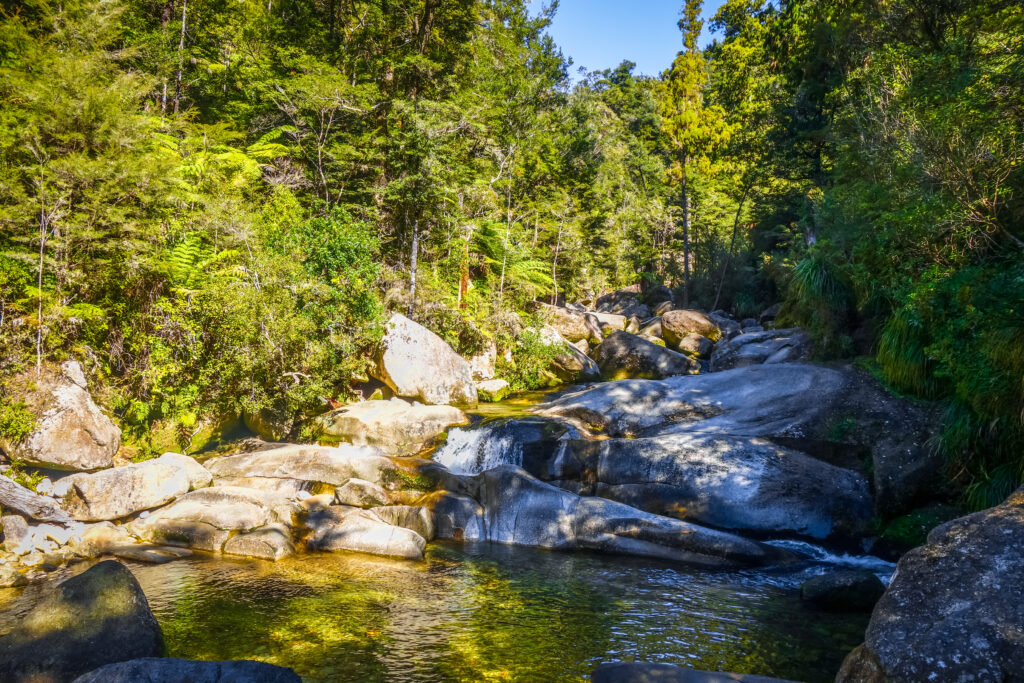
Beach, which in fact is a mistranslation of Locach, was mentioned on many maps and by many travellers prior to Tasman, but what’s more — it was a land described by Marco Polo as one plentiful with gold.
READ MORE | New Zealand’s namesake: how the Dutch named NZ
At the end of November 1642, after a stop at Mauritius Island and a storm, which directed the ship to the northeast, Tasman saw the coast of a new piece of land.
In the good old tradition of the time, he named it after his sponsor — Van Diemen’s Land, after Antony van Diemen, Governor-General of the Dutch East Indies. On January 1, 1856, the land was renamed Tasmania in honour of the first European who set foot there.
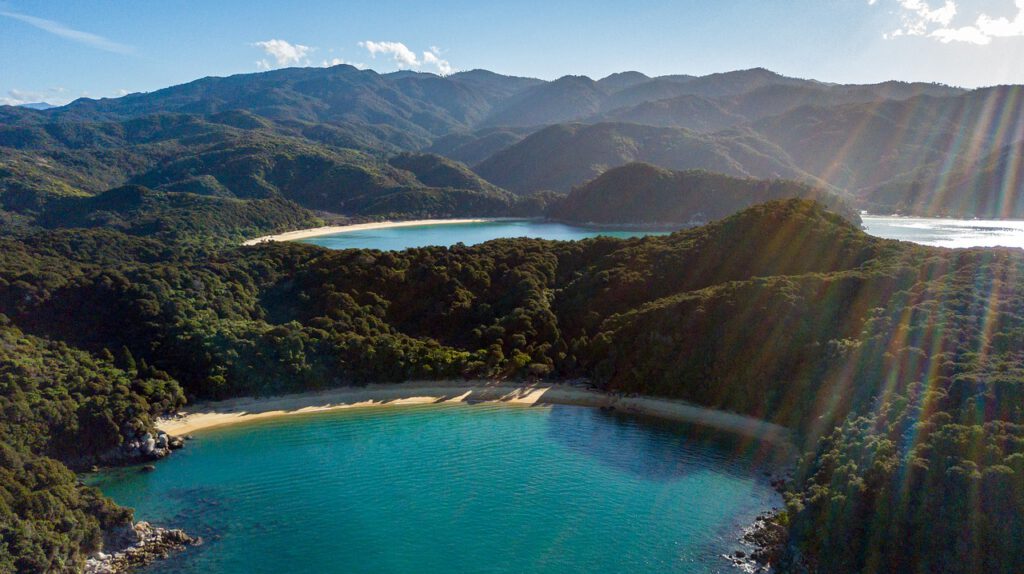
Just 13 days after “finding” Tasmania, Abel Tasman also saw the shores of New Zealand. Unfortunately, he was not aware of that — he thought this was a land connected to Isla de los Estados in Argentina, hence he charted it as Staten Landt (both names given in honour of the States-General).
A few years later, in 1645, Dutch cartographers corrected Tasman’s mistake and named the land Nova Zeelandia, after the Dutch province of Zeeland.
Upon his return voyage, Tasman and his ships passed through the Tongan archipelago, spotting the Fiji islands, which the explorer named Prince William’s Islands.
2. Easter Island: A troubled journey
In August of 1721, the Dutch West India Company decided to commission a search for the mythical Terra Australis, also hoping to open a western trade route to the Spice Islands (The Maluku).
Dutch explorer Jacob Roggeveen was sent to complete the task. He sailed to the South Atlantic Ocean, entered the Pacific Ocean, and continued further south.
Much like many before him, Roggeveen looked for one thing to find another. He, however, skipped the largely observed tradition of naming newly found lands after royalties or sponsors of the trip and decided to honour the day he spotted the land — Easter Sunday, April 5, 1722.

Perhaps, he followed the example of British captain William Mynors, who saw an island in the Indian Ocean on Christmas Day of 1643 and named it… Christmas Island.
Jacob Roggeveen explored 12 islands, but his trip was far from trouble-free. He lost his flagship and had a violent, deathly encounter with the inhabitants of some of the islands.
READ MORE | Islands of the Netherlands: a guide to the Wadden Islands
Upon returning to the Netherlands, the Dutch East-India Company VOC had him arrested for violating their monopoly and confiscated the remaining two ships. Only after a long lawsuit, Jacob Roggeveen was acquitted and compensated for his losses.
3. Robben Island: The political prison
Most people know about the Dutch colonial ties to South Africa, including Cape Town, which was founded by the Dutch in 1652 as a trading post for the VOC.
READ MORE | The Dutch and South Africa: more than just Apartheid and Boers
But less than seven kilometres west of Cape Town, the Dutch also found a small island and gave it a name that might not immediately strike you as Dutch. Robben Island was not named after a person or a bird, but after the many seals that the Dutch saw there, robben being Dutch for seals.
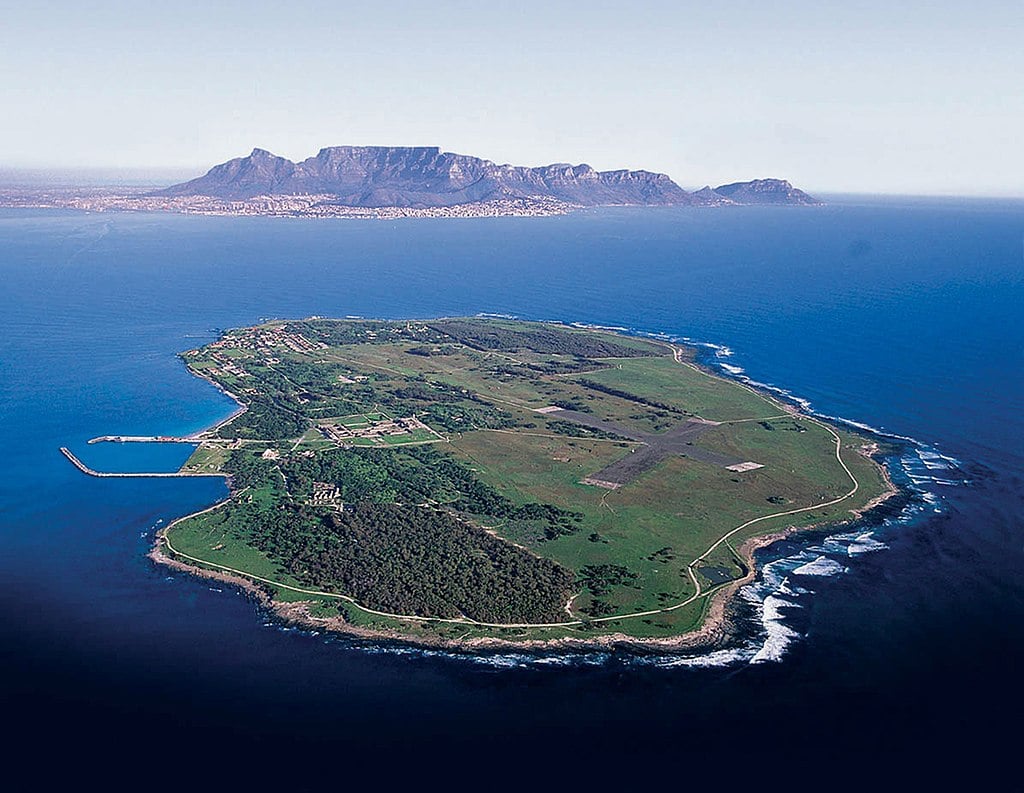
Robben Island is perhaps most famous for the political prisoners that were detained there during the nation’s era of Apartheid.
Nelson Mandela, among others, was imprisoned on the island for 18 years before helping dissolve the Apartheid state and winning the Nobel Peace Prize.
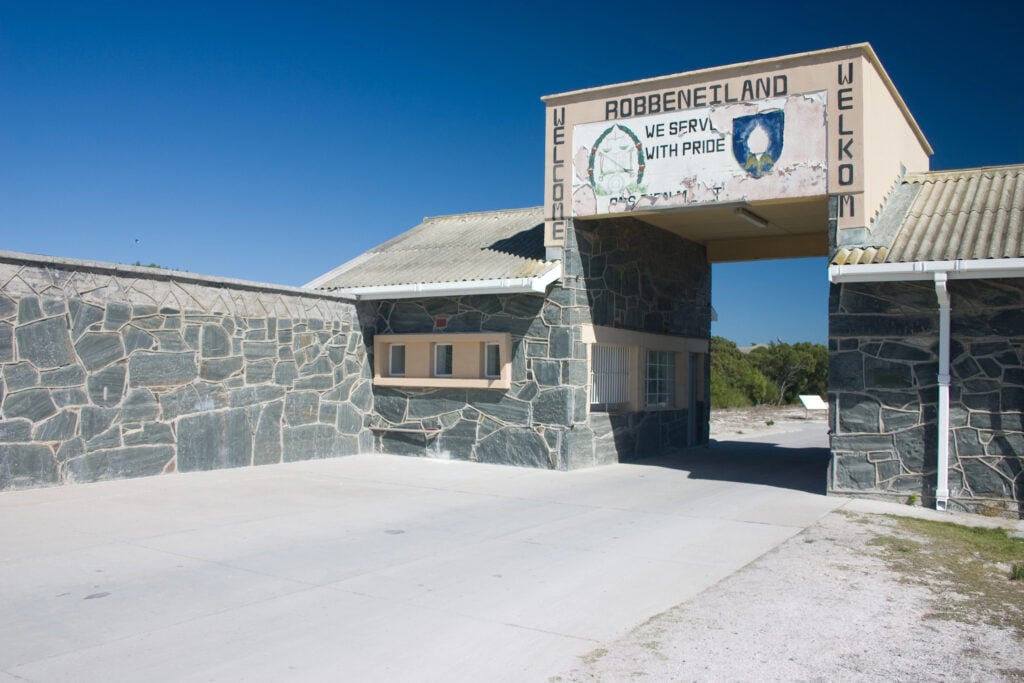
But Robben Island has been holding political prisoners for much longer than most people realise. In the 16th and 17th centuries, the VOC used the island to incarcerate political leaders from other Dutch colonies.
4. Bluefields, Nicaragua: The Dutch pirate
Bluefields is a municipality in the Central American nation of Nicaragua and was named after the notorious Dutch pirate, Abraham Blauvelt. The area is located at the mouth of the Escondido River, and it was here that Blauvelt hid during the 17th century.
But this thieving seaman began not as a pirate, but as a very respectable employee of the Dutch East India Company.
He was the first European to explore what are now Honduras and Nicaragua, and even travelled to England trying to gain support to establish a colony here. When these efforts failed, Blauvelt became a privateer and started raiding Spanish ships off the coast of Jamaica.

Blauvelt would then trade his spoils with the Dutch colony of New Amsterdam (now New York), but when the colony feared tainting their reputation by trading with pirates, they banished him from the area. Thus, Blauvelt fled to what is now Bluefields, and the rest is history.
5. Barents Sea: The unbearable cold
The sea located on the northern coasts of Norway and Russia, used to be called Murmanskoye morye (Murman Sea) and appeared on maps for the first time in the 16th and 17th centuries under this name. In the 19th century, it renamed after the Dutch navigator, cartographer, and explorer, Willem Barentsz, in honour of his heroic expeditions in the far North.
READ MORE | Australia and the Netherlands: adventures at sea and shared history
Barentsz took three expeditions in search of a Northeast Passage which, he believed, opened north of Siberia in June every year because of the sun melting the ice and snow. The passage would also mean a new trade route to the Indies.
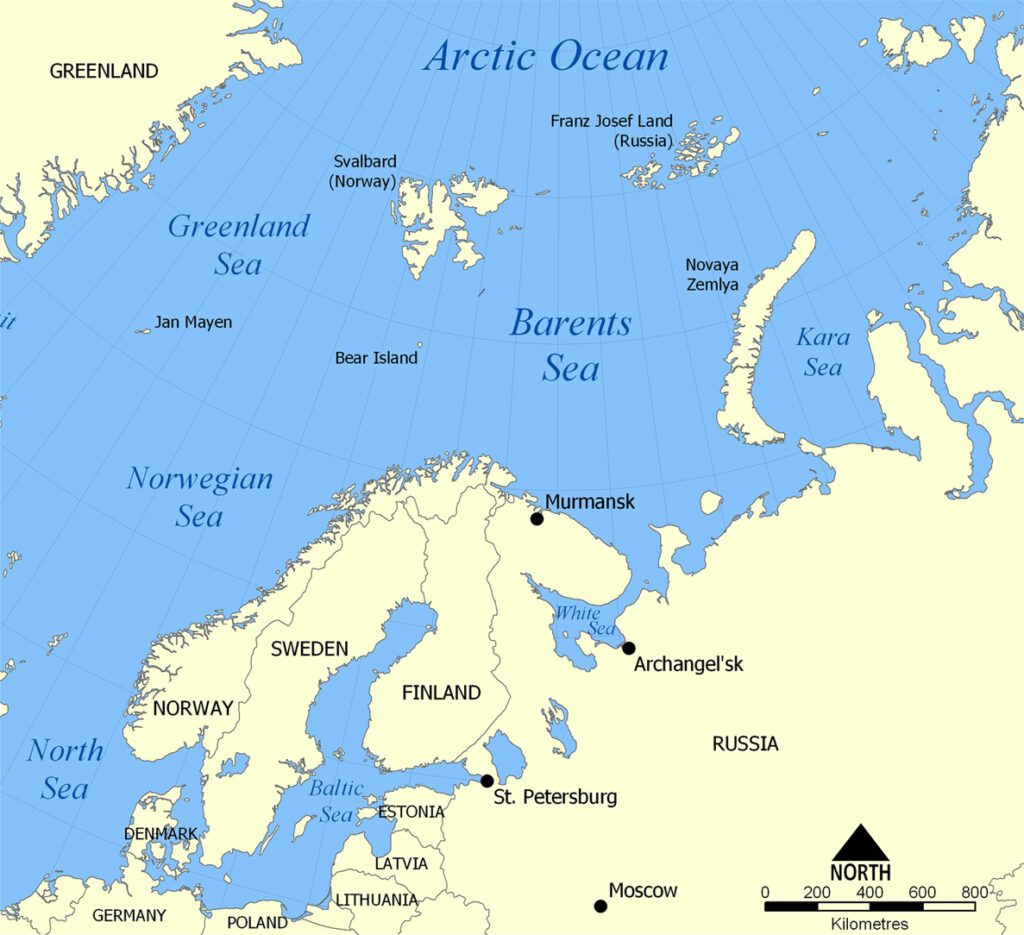
During the voyages, Barentsz and his crew members were often victims of the local fauna (attacked by polar bears) and the extreme weather conditions — the first two expeditions ended due to large icebergs and frozen waters. Because of this failure, the States-General refused to subsidize any further trips of this sort.
Instead, they offered a generous reward to anyone who could successfully navigate the route to its end. The Town Council of Amsterdam provided two ships, captained by Jan Rijp and Jacob van Heemskerk, under the command of Barentsz.
READ MORE | Best beaches in the Netherlands: the ultimate guide to Dutch beaches
The third expedition started rather well. Barentsz and company discovered Bear Island, Spitsbergen and named a few fjords. Unfortunately, a disagreement led them to part — Heemskerk with Barentsz continued northeast, and Rijp headed north.
In July, Barentsz reached the icy Novaya Zemlya archipelago, but because of the many icebergs around, he and his crew remained trapped there for a whole year fighting the extreme cold.
In June of the following year, those still alive decided to sail away. Barentsz died at sea only seven days after their journey back home began. After seven more weeks, the boats were finally rescued by a Russian ship.
In 2011, the Dutch director Reinout Oerlemans released “Nova Zembla”, a historical drama, based on the incredible story of Barentsz and his crew trapped on the Novaya Zemlya archipelago.
6. Mauritius: The abandoned prince
Today’s independent state of Mauritius has a very long colonial history with the Dutch, the French, and the British. There is strong evidence that the island was known already to Arab sailors even before the European expeditions.
In the 14th century, Portuguese sailors visited the then uninhabited land, and their cartographers gave it a name — Mascarenes — but took no interest in it.
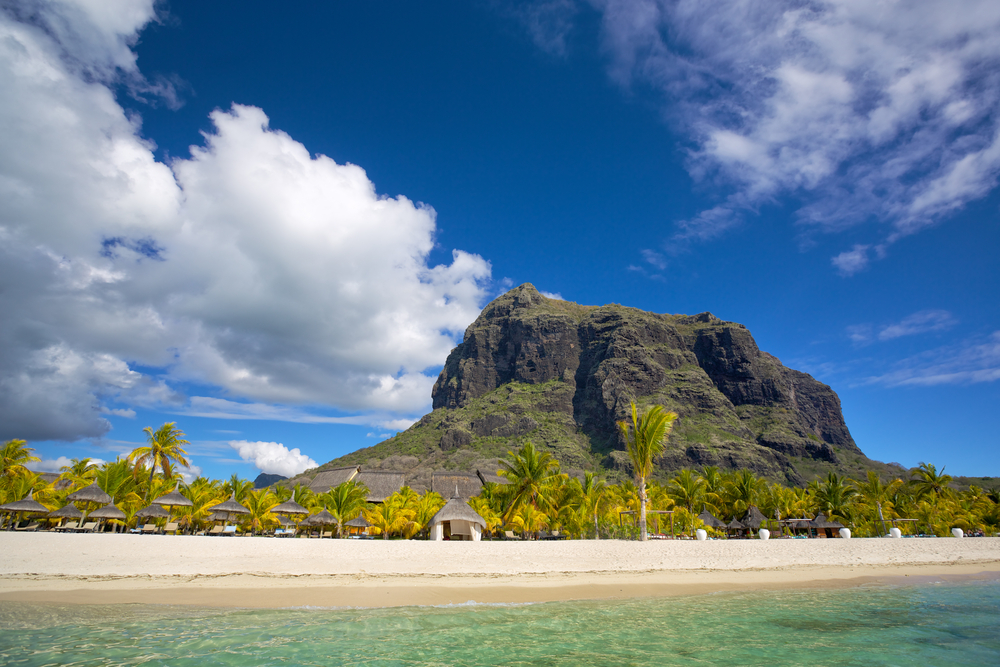
At the end of the 16th century (1598), bad weather whilst passing the Cape of Good Hope changed the route of five Dutch ships which wound up sailing to the shores of Mauritius.
Under the command of Wybrand van Warwijck, they anchored and named the island Prins Maurits van Nassaueiland, after Prince Maurits of the House of Nassau.
The Dutch made a settlement on Mauritius for their ships passing through this sea route and had it for 20 years. Eventually, they abandoned it.
The island was taken over by the French, who changed its name to Isle de France and used it, among other things, to raid British commercial ships. That lasted up until 1810, when the British took control over the island and returned its Dutch name.
7. In and around New York
A fair amount of today’s American toponyms came from the Dutch language on the account of the first settlers there. The Dutch heritage is particularly visible in and around New York (previously known as New Amsterdam).
READ MORE | Did the Dutch really buy New York for 24 dollars?
Here are just a tiny fraction of examples:
Rhode Island
One of the theories says that it was named by the Dutch trader Adriaen Block, who, when passing by it, described it as “een rodlich Eylande“ (a reddish Island), perhaps due to red clay.
Staten Island
Named after the States-General, Staaten Eylandt, from Staten-Generaal.
Harlem
Named after the Dutch city, Haarlem.
Wall Street
Located in what was then known as Nieuw Amsterdam, a 17th-century Dutch settlement on the tip of Manhattan, the street was then known as de Waalstraat, on the account of a wooden palisade, that was protecting the settlement from the natives and the British.
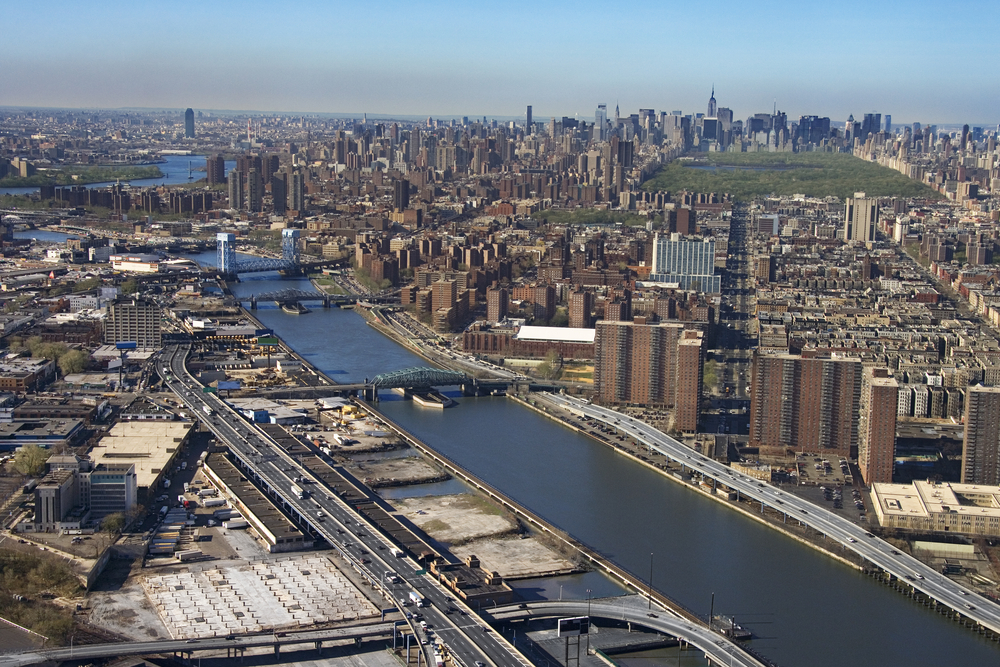
Did you know any of these places were named by the Dutch? If so, tell us which in the comments below!

I was studying in holland once, and one told me that he came from haarlem, so for 6 month i though he was born in new york – also I lived close to Breukelen in holland and one told me that Brooklyn came out of that. New zeeland had also crossed my mind before.
Bluefields…nicaragua…named after the Dutch pirate Blaufelt
New Amstel now New Castle, Delaware
Schuyler Kill now Schuylkill River
Bronx
several “kills” in Delaware, NJ and New York
Fort Orange now Albany, NY
Suden Rivier (i thought also Zuider Kill but can’t confirm) now the Delaware RIver
West River now the Susquehanna River
Fresh River now called the Connecticut River
Tammerkill now called Big Timber and Little Timber Creeks in South JErsey)
Zwaanendael now Lewes, Delaware
Jacques Eylandt (now Camden, N.j.)
High Island now Burlington Island in the Delaware River
Egg Harbor, a regional name in South Jersey
Cape May, South JErsey & Cape Henlopen, Delaware
Paulus Hoek now part of Jersey City, N.J.
Schraalenburg now broken up into Bergenfield and Dumont, N.J.
Bergen County, NJ
Demarest, NJ (from the Des Marets family)
New Utrecht (now part of Brooklyn)
Mauricetown from Maurice River, pointing back to a ship wreck named Prinz Mauritz (of Orange) (NJ)
East River (NYC)
Amsterdam and Rotterdam, NY
New Amsterdam (2nd), now called Buffalo, NY
Blauvelt, NY
several other communities on Hudson (Noardkill) and Mohawk Rivers
Coney Island – Konijn EIland (rabbit island)
Paerdegat (Brooklyn), dumping ground for horse manure – Paardegat
Boerem Hill (Brooklyn) – farmers Hill – Boeren Heuvel
Red Hook (Brooklyn) – Rode Hoek – named for red clay found
Brooklyn – Breukelen
Flushing – Vlissingen
Despite the devil(spyt den duyvel)
I live in Tasmania (ex Van Dieman’s Land). The place has several Dutch place names that were named by Abel Tasman, mainly on the East Coast. Includes Maria Island, Schouten Island, Maatsuyker Island. On the West Coast he named Mt.Heemskirk and Mt. Zeehan after his two ships.
Wall Street was probably Wal Straat rather than Waal Straat. A “wal” is an earth berm, most often next to water, used to make a more suitable place to build structures.
Dirk Hartog’s ship, the Eendracht was blown too far east and Hartog landed on a small island (now called Dirk Hartog Island) off the west coast of Australia on the 25th October 1616.
Brooklyn was originally Breukelen
Not a place, not by the Dutch, still applicable: the English were referring to the NewAmsterdam Dutch as Jan-Kees, which transformes into Yankees
Barneveld, New York, USA
Yes, I am aware of the many Dutch-influenced names in and around what is now NY City, the surrounding states of New Jersey and Connecticut, and the Hudson Valley in NY State.
Examples: The Bronx – named after the De Bronks family, Flushing – named after Vlissingen, Brooklyn – named after Breukelen, waterways around NY City ending in Kill, like Arthurs Kill, and old Dutch word for cold. For example, my Brother Bob lives in Wynants Kill, NY, near Albany. Orange Ave in Princeton, NJ, New Haven in Connecticut, and so on.
One observation though, I see this on Wikipedia also. The Dutch East India and the Dutch West India Companies (VOC). It is not INDIA; it is Indie like the Dutch East Indies (old spelling Indiesch), The same for West Indies (old spelling Indiesch)
Not just to build on but also for defensive purposes (with or without a palisade).
The red light district in Amsterdam is locally still known as “de wallen” (the walls), after the structures that were once – 13-th and 14-th century – built there as part of the defensive line around Amsterdam. Two of the streets / canals that cut through the red light destrict (de wallen), the “Oudezijds Voorburgwal” (Old side ‘in front of’ (the) fortresswall) and the “Oudezijds Achterburgwal” (Old side ‘behind’ (the) fortresswall), also refer to the nature of these structures. And back they were indeed nothing more then an earthen walls with a palisade, behind a protective channel / moat. The “Old side” refers to the eastern side of Amsterdam as it was still cut in two by the river Amstel. The western part was known as the “New side” so there is also a “Nieuwezijds Voorburgwal”. The names stuck, the walls are long gone.
The story above was meant to be a reply to ERIK
And in reply to Hans:
The old Dutch word kil (from “kille”) had different meanings throughout the centuries, all having to do with a some kind of small or shallow waterway in connection / relation with the sea (eg. in between sandbanks, a river, a stream, a creek, a tidal channel, etc.). During the 16-th and 17-th century it probably meant something like a small river / stream or passage in between two pieces of land / shores.
Looking at old georaphical maps noticed that Australia was first named New Holland
Cape Horn or Cabo Horno is named after the city of Hoorn in Holland. Strait Le Maire is named after the Dutchmen Le Maire from Hoorn, who discovered the sea route around Cape Horn together with Schouten, who had the Schouten islands named after him. Many names in Guyana are Dutch, like Stabroek and New Amsterdam. Cape Town is a Dutch name, like plenty of others in South Africa, Suriname and Indonesia. Several streets in Malakka, Colombo and Galle have Dutch names. There is an island Amsterdam in the Indian Ocean. Point à Pitre (Pieter), the capital of Guadeloupe is Dutch, Pieter was a Dutch fisherman. Some say Port au Prince, the capital of Haiti, is named after a Dutch prince. So is Nassau on the Bahama’s. Etc.etc..
It is Easter Island*, not IslandS 🙂
Also, Cabo de Hornos in Chile named after Hoorn.